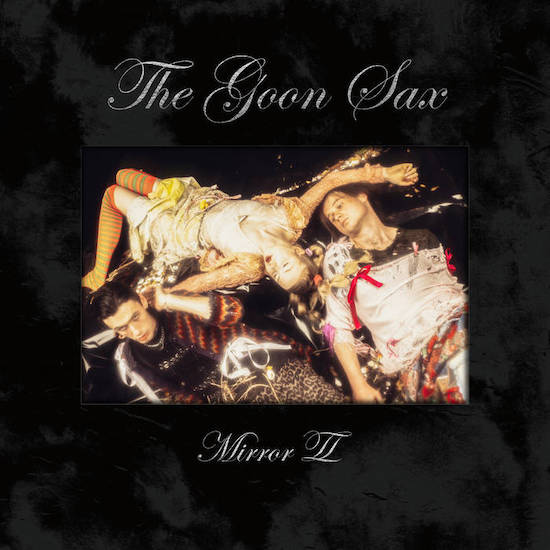The Goon Sax’s debut album Up To Anything quietly redefined traditional notions of indie, pop, and everything in-between. It was an astutely candid snapshot of wide-eyed euphoria and the grievances of youth – trivial and significant – buoyed by scrappy instrumentation and a rare prowess for creating the kind of effectual jangle pop that never leaves you. Granted, it would be too obvious to compare them to The Go-Betweens, given their geographical roots, but the similarities are often striking: their music evokes the same feelings of nostalgia and melancholy, as well as a deep understanding of the importance of melody and all of its nuances. Louis (son of the Go-Between’s Robert) Forster’s accented turn of phrase – combined with an emotional resonance – denoted a particular sun-kissed-but-anxious sound that couldn’t be from anywhere other than Australia.
Having said that, Mirror II sounds immediately disparate to its two predecessors. There were signs of a deeper exploration of pop and electronic music on 2016’s We’re Not Talking, but there’s more of a distinctly European feel from the trio here – thanks in part, perhaps, to Forster uprooting to Berlin (which might explain his sprechgesang verse on ‘Bathwater’). Mirror II sounds so much more sophisticated, self-assured and, dare I say, grown up.
To call Mirror II eclectic would be an understatement. From disco to folk, to no wave and bubblegum-pop, it’s clear that The Goon Sax’s historical music knowledge is all encompassing. Gone are the first-person narratives of their insecure school days – that’s been replaced with more oblique, universal themes, the culmination of which was from three years of writing and some considerable time spent apart. This allowed them to experiment with more abstract, atonal sounds.
It’s refreshing to see a band that thrives on sharing the limelight. There is no front person, per-se. The roles within The Goon Sax are shared equally: they all take turns singing and swapping instruments, and each member has their own respective qualities that are imperative to the band’s formula. Riley’s softer, poppier inflictions on ‘Desire’ and ‘Tag’ point towards a predilection for Les Rallizes Dénudés, Keiji Haino – and even Kylie Minogue.
Elsewhere, Louis’ more volatile, shapeshifting approach on ‘Psychic’ and ‘In the Stone’ is rooted in an affinity for Young Marble Giants, Stereolab, and Diane Di Prima’s Memoirs of a Beatnik. James’ psychedelic folk on ‘Carpentry’ and ‘Caterpillars’ recall the hazy romanticism of The Walker Brothers, Felt, and Pink Floyd’s Syd Barrett.
The juxtaposition of these stylistic temperaments complement each other so well that The Goon Sax sound like a musical anomaly, despite wearing their influences on their sleeves. They manage to tap into very familiar feelings and emotions in a way that’s ambitious and lofty, but never cloyingly sentimental or maudlin. Mirror II is a lesson in transcending our feelings while also acknowledging them.
You might not realise it yet, but there’s a special place in the annals of pop music for this band. In fact, Mirror II would sit comfortably next to New Order’s Power, Corruption & Lies when you consider its strange, petulant romanticism and surreal imagery.


